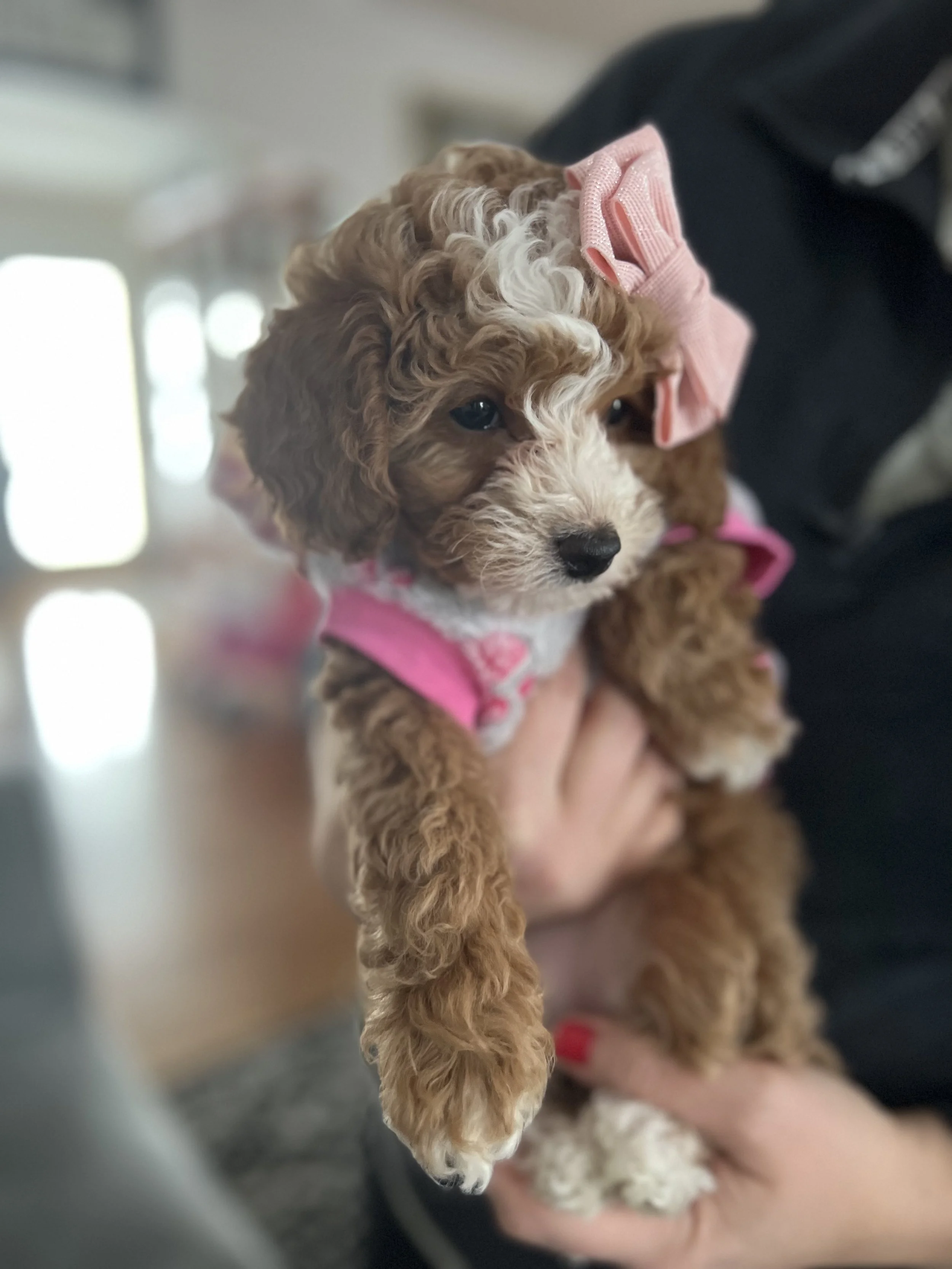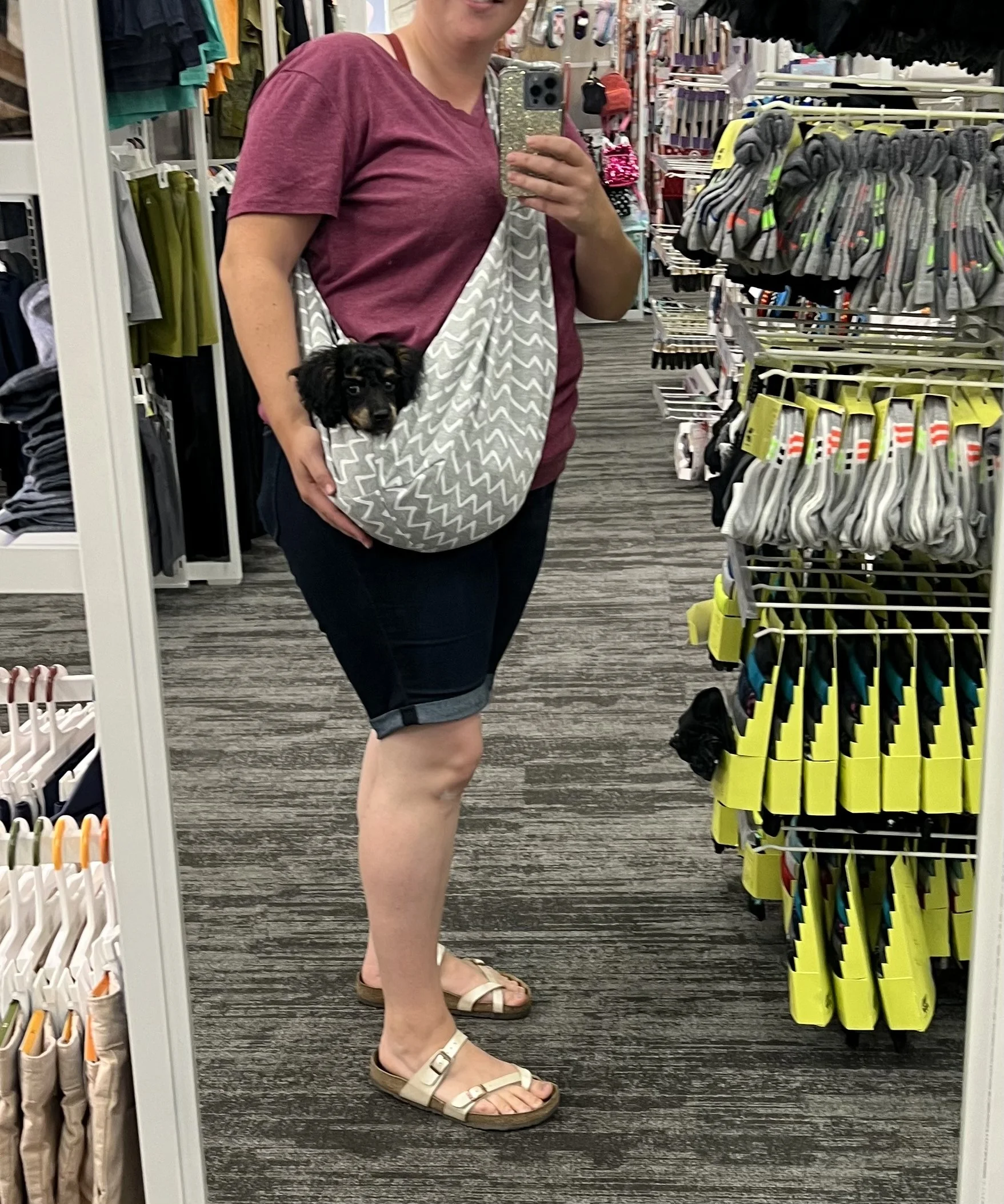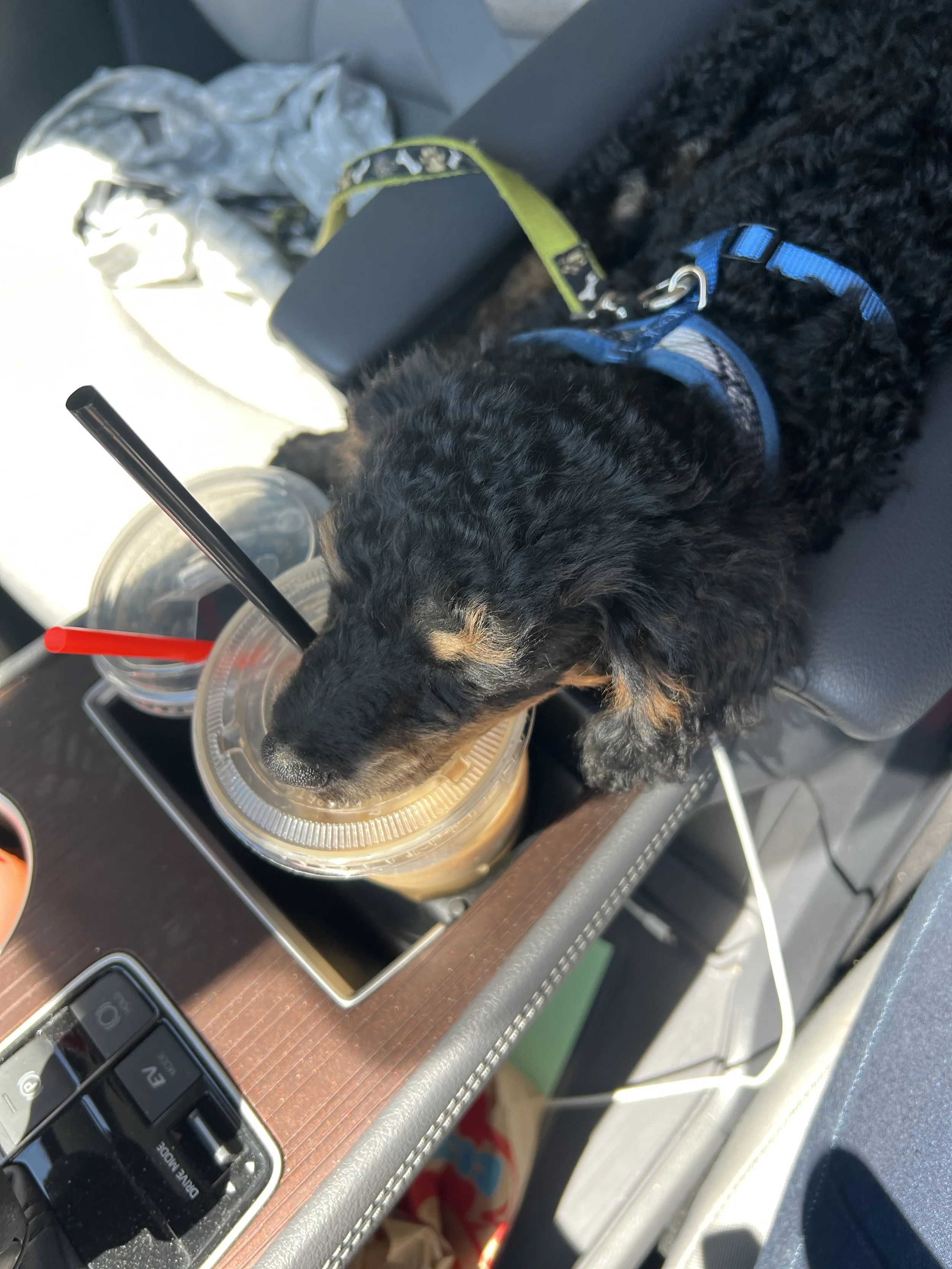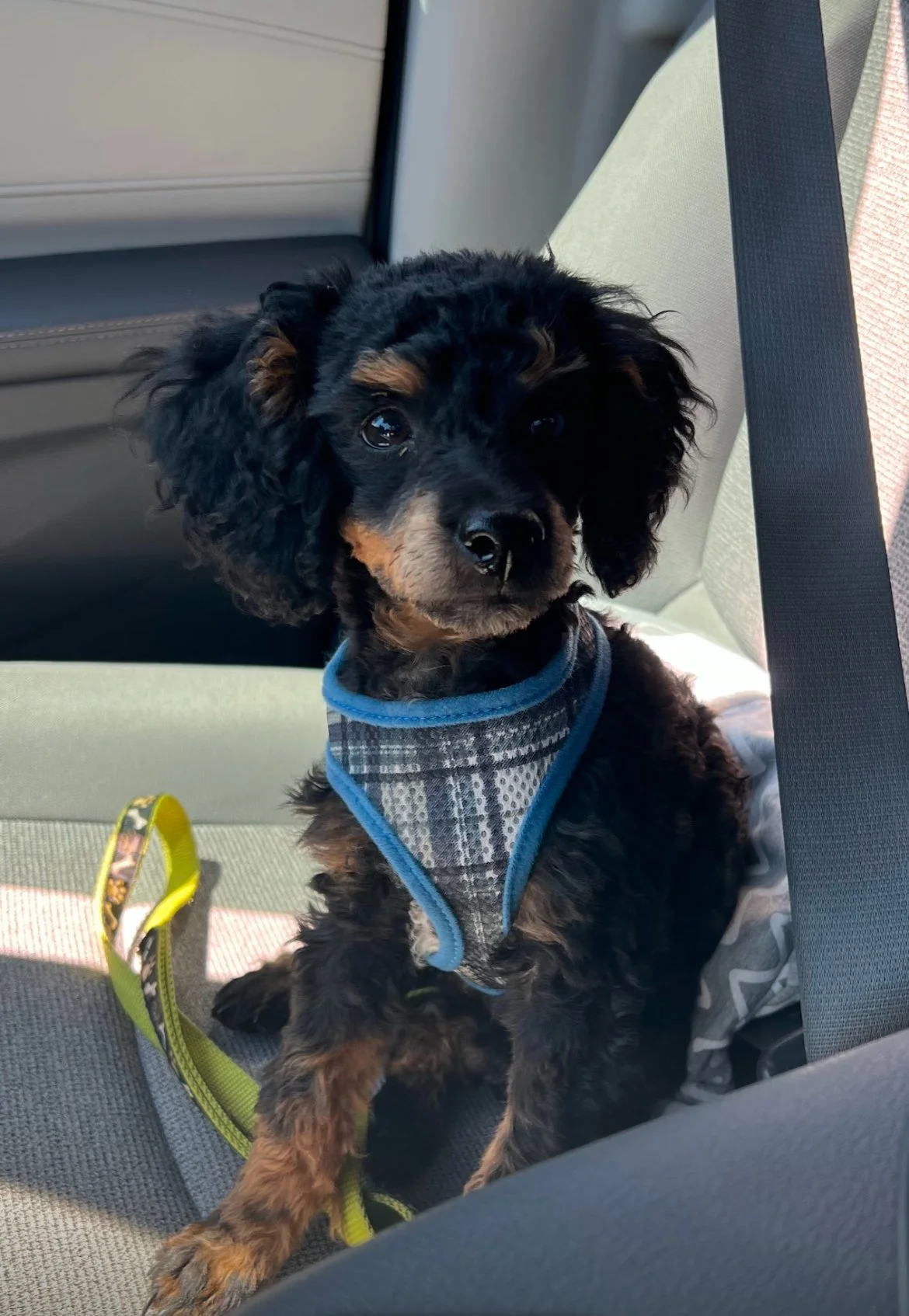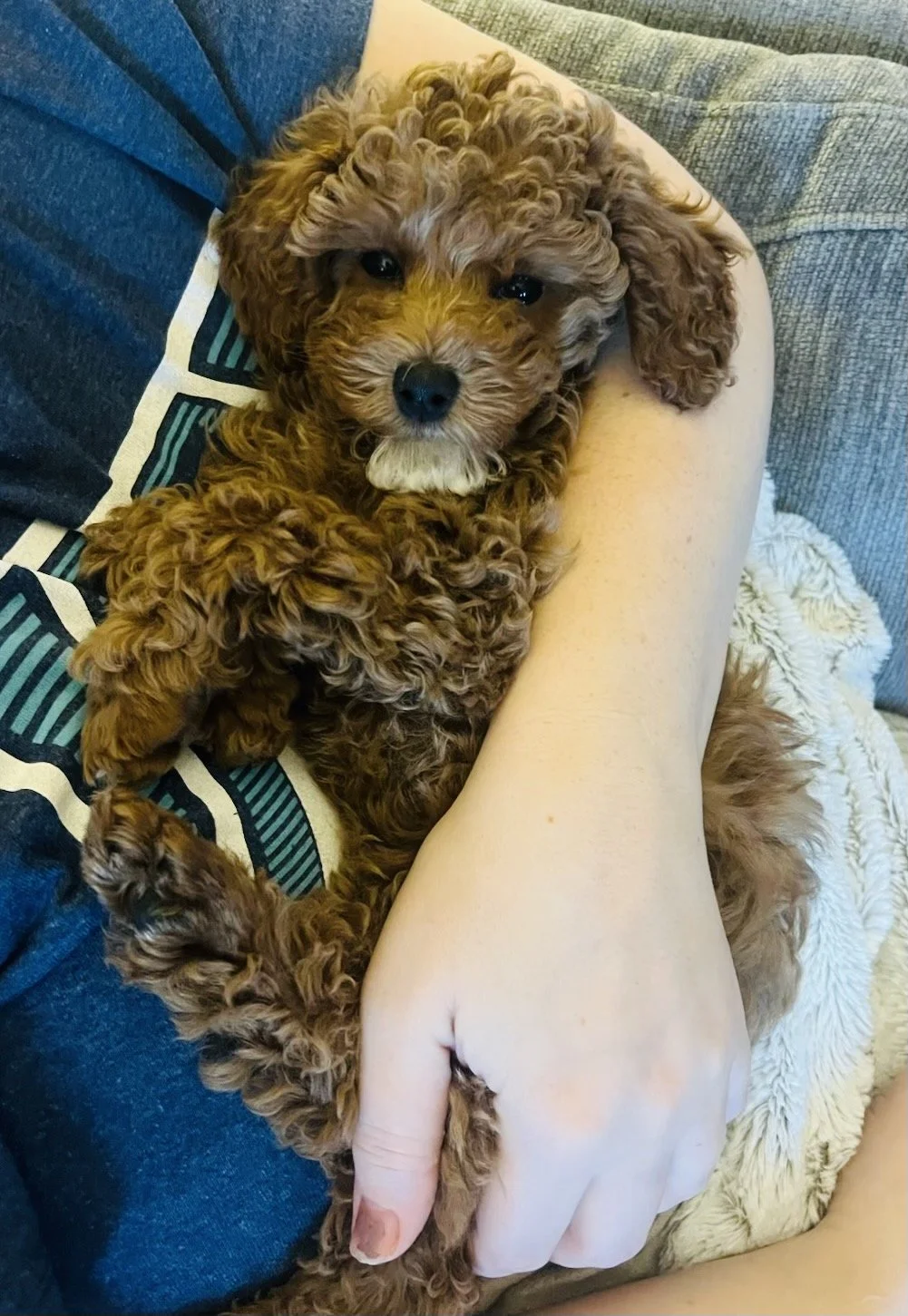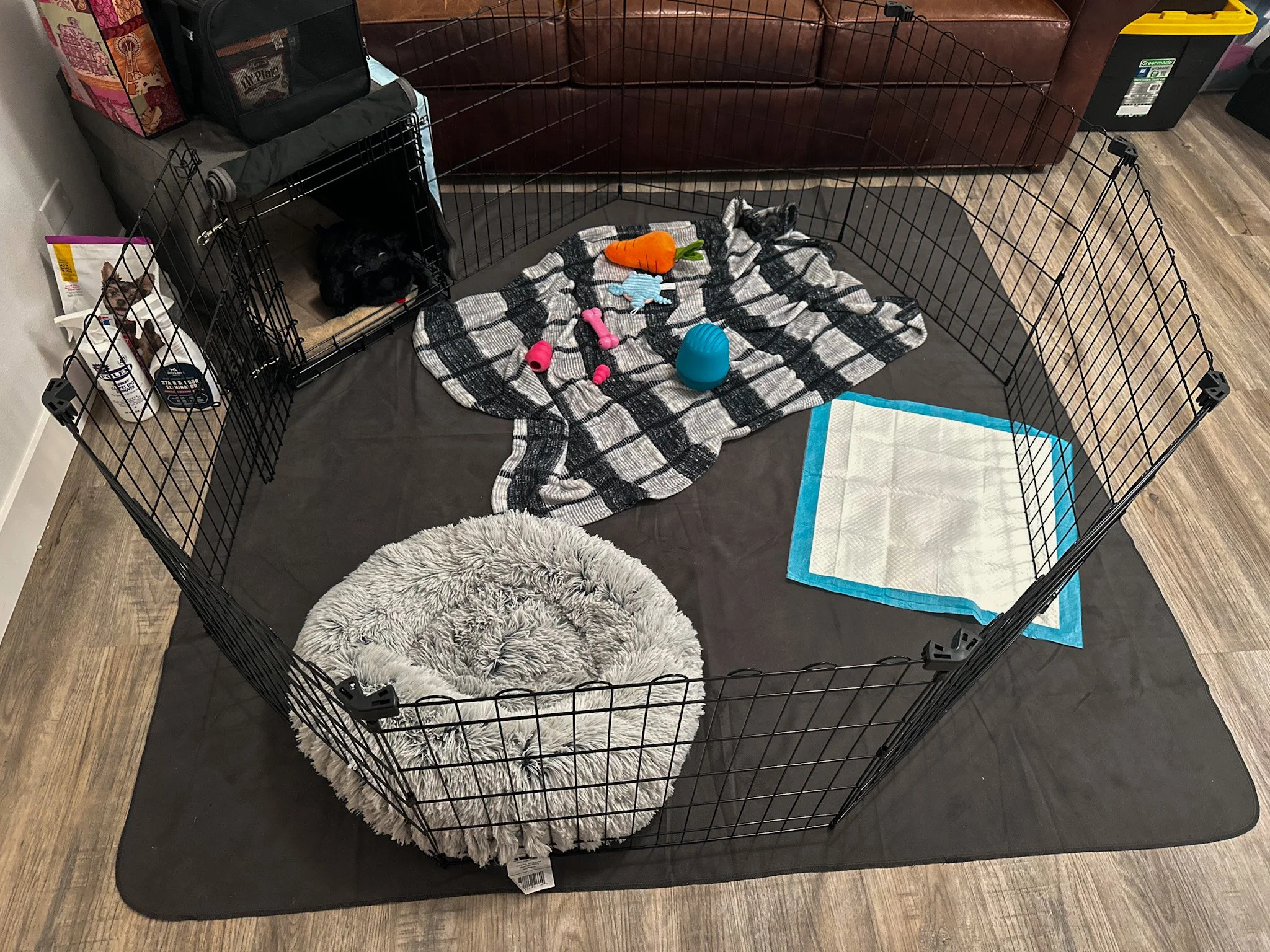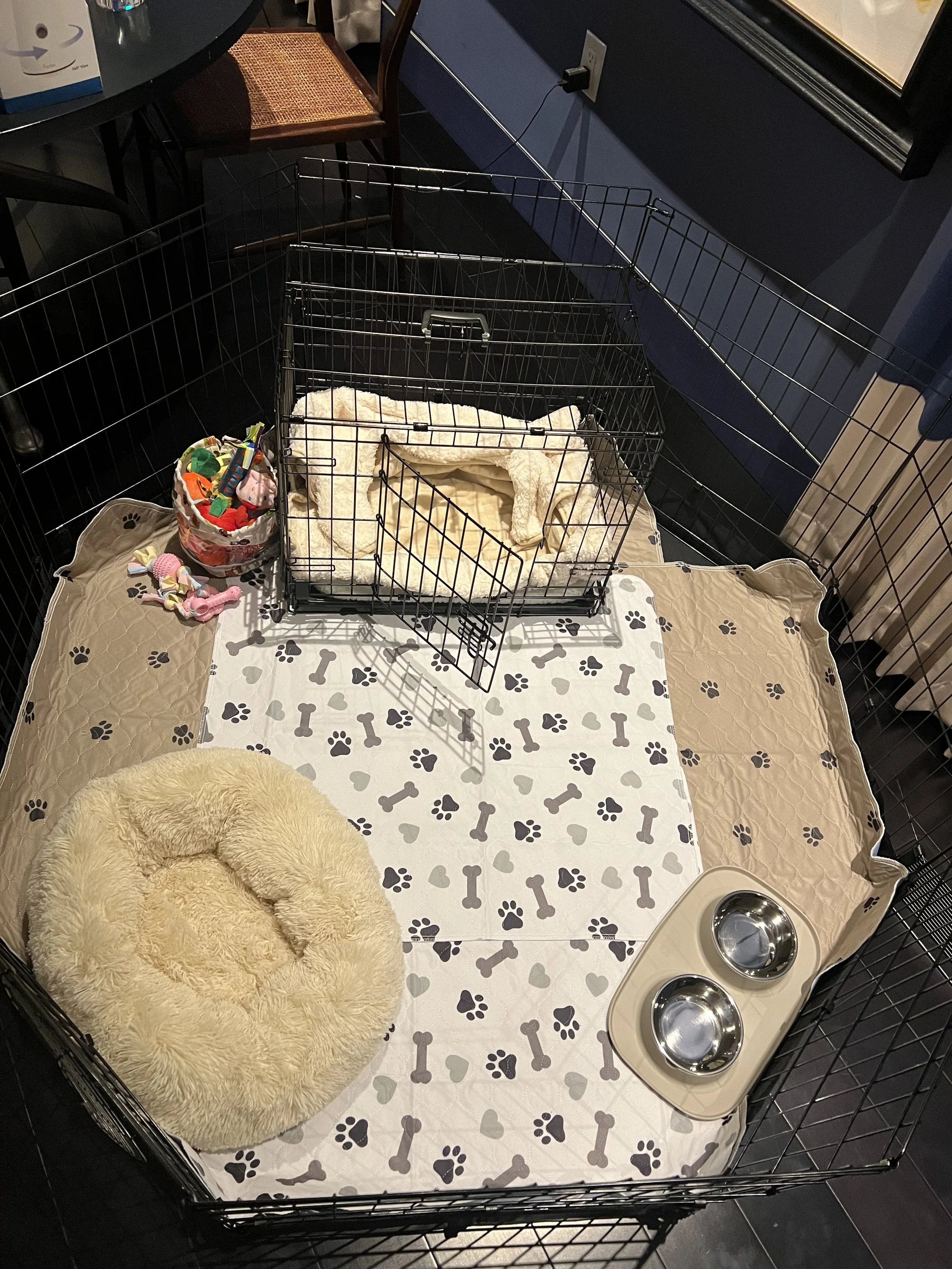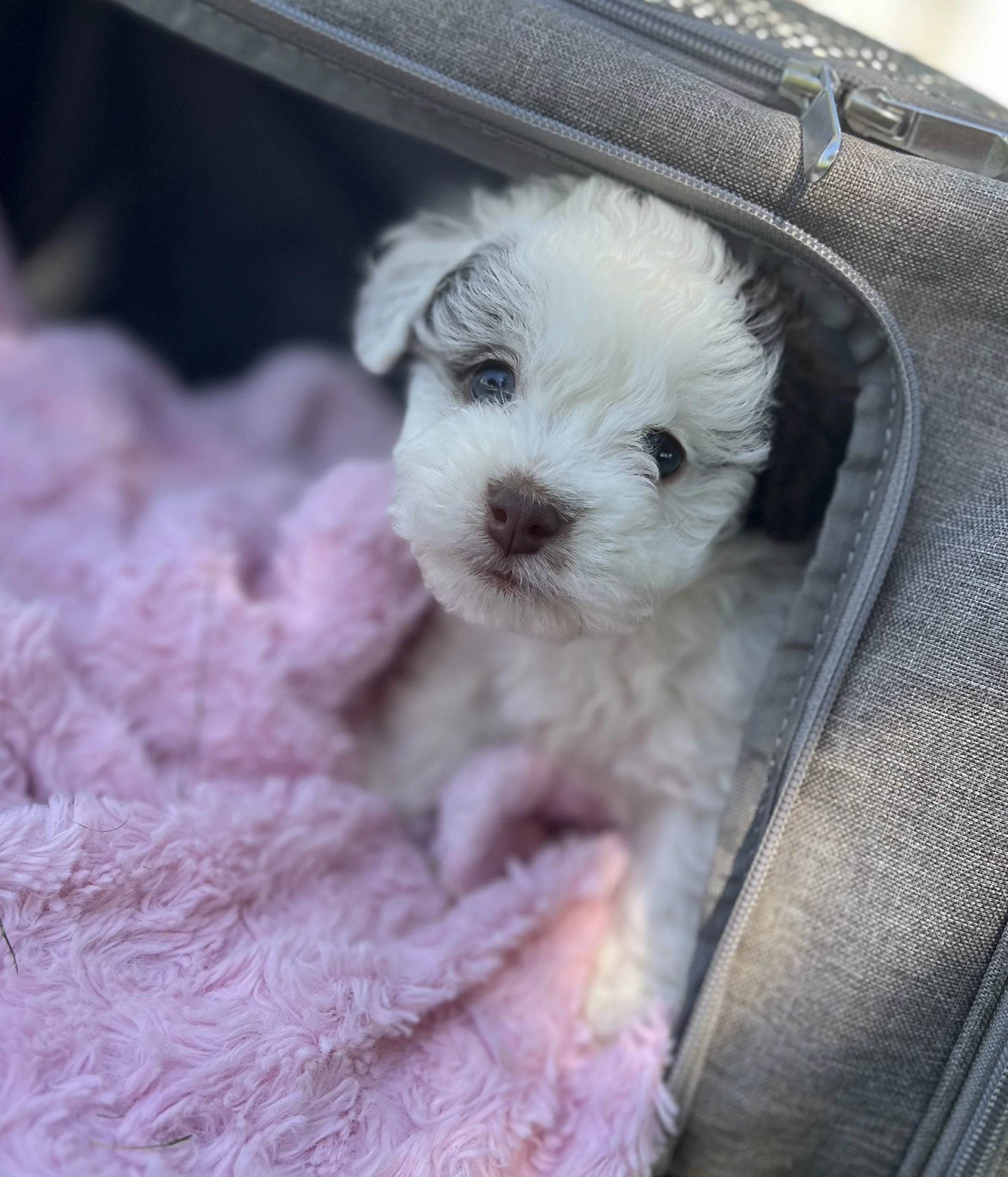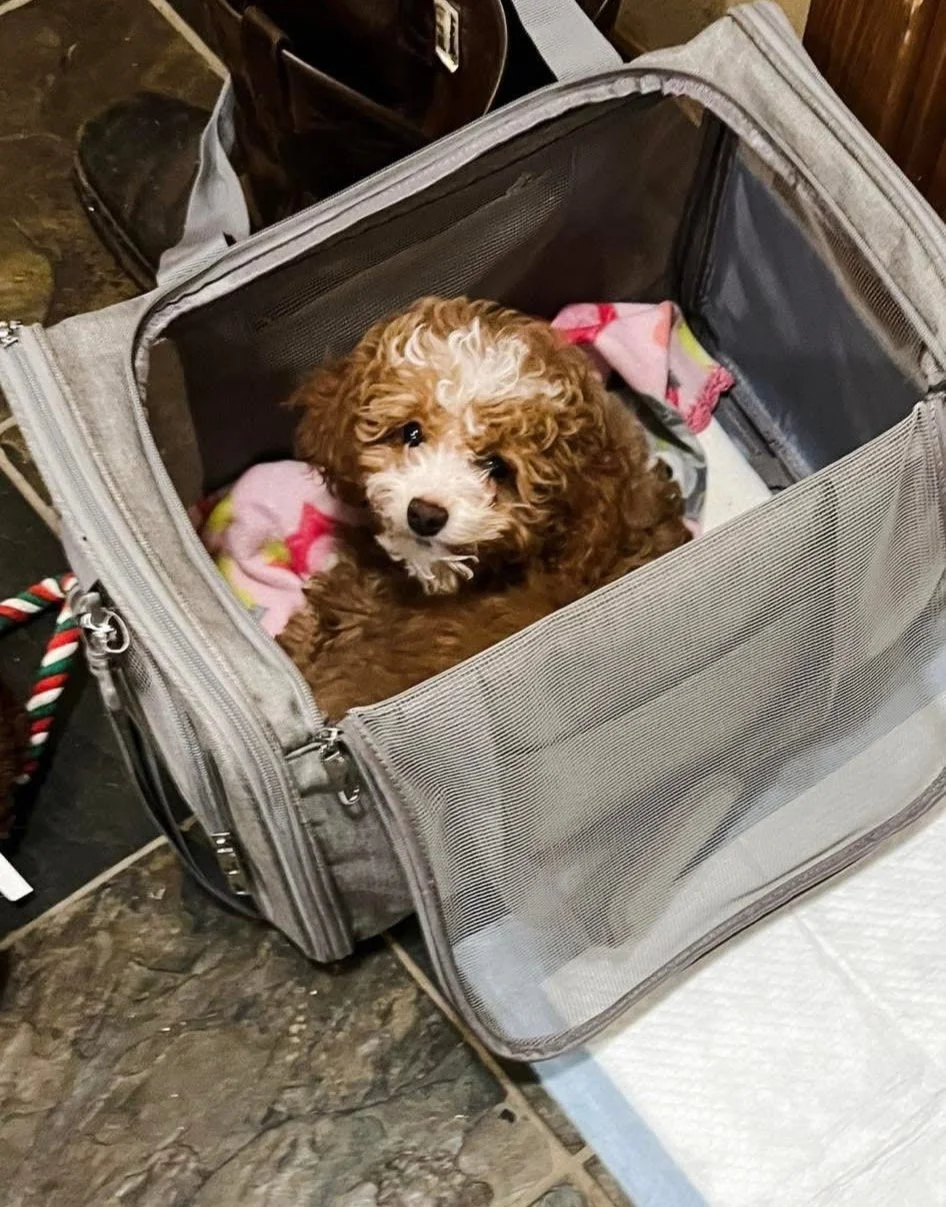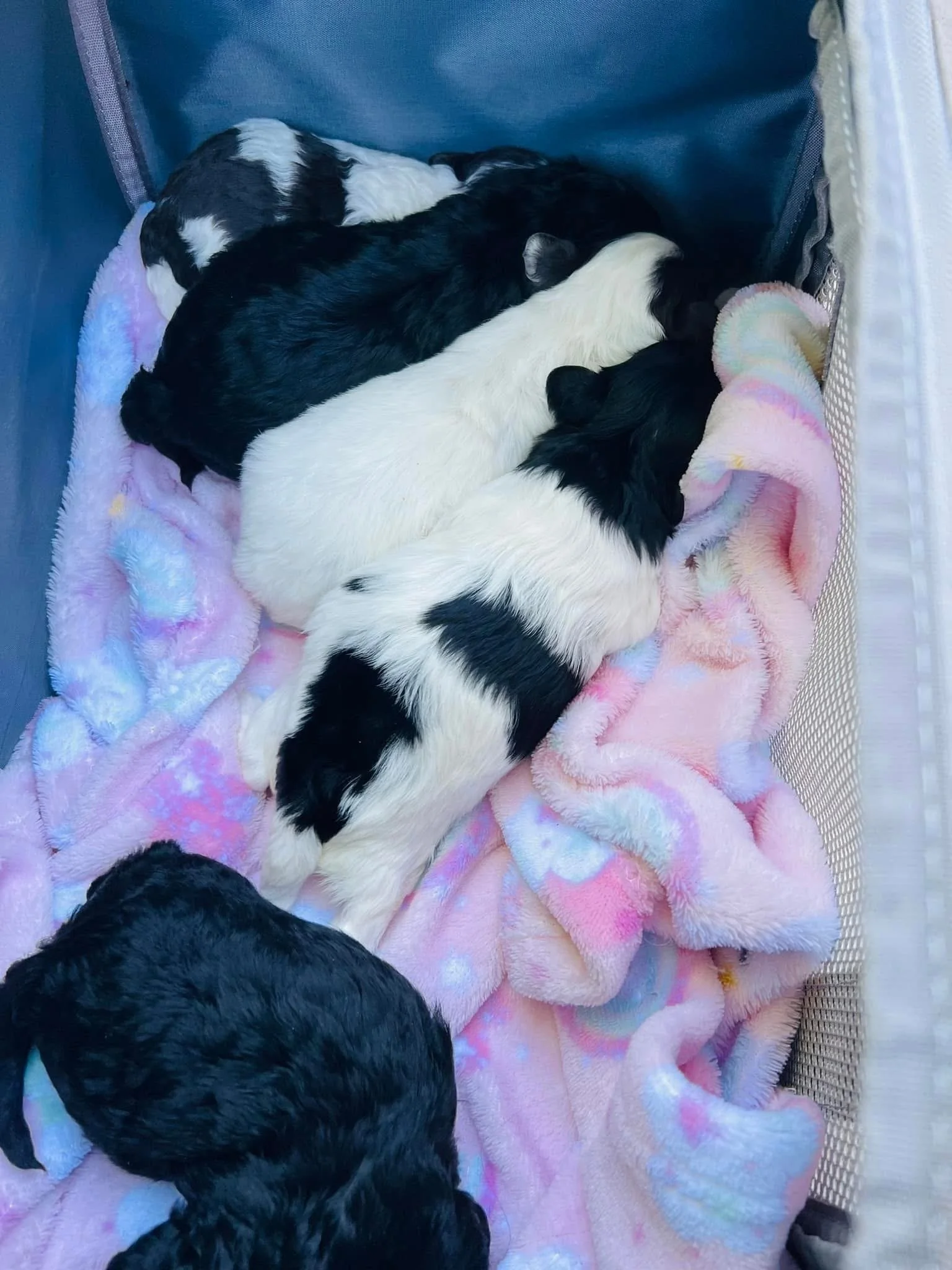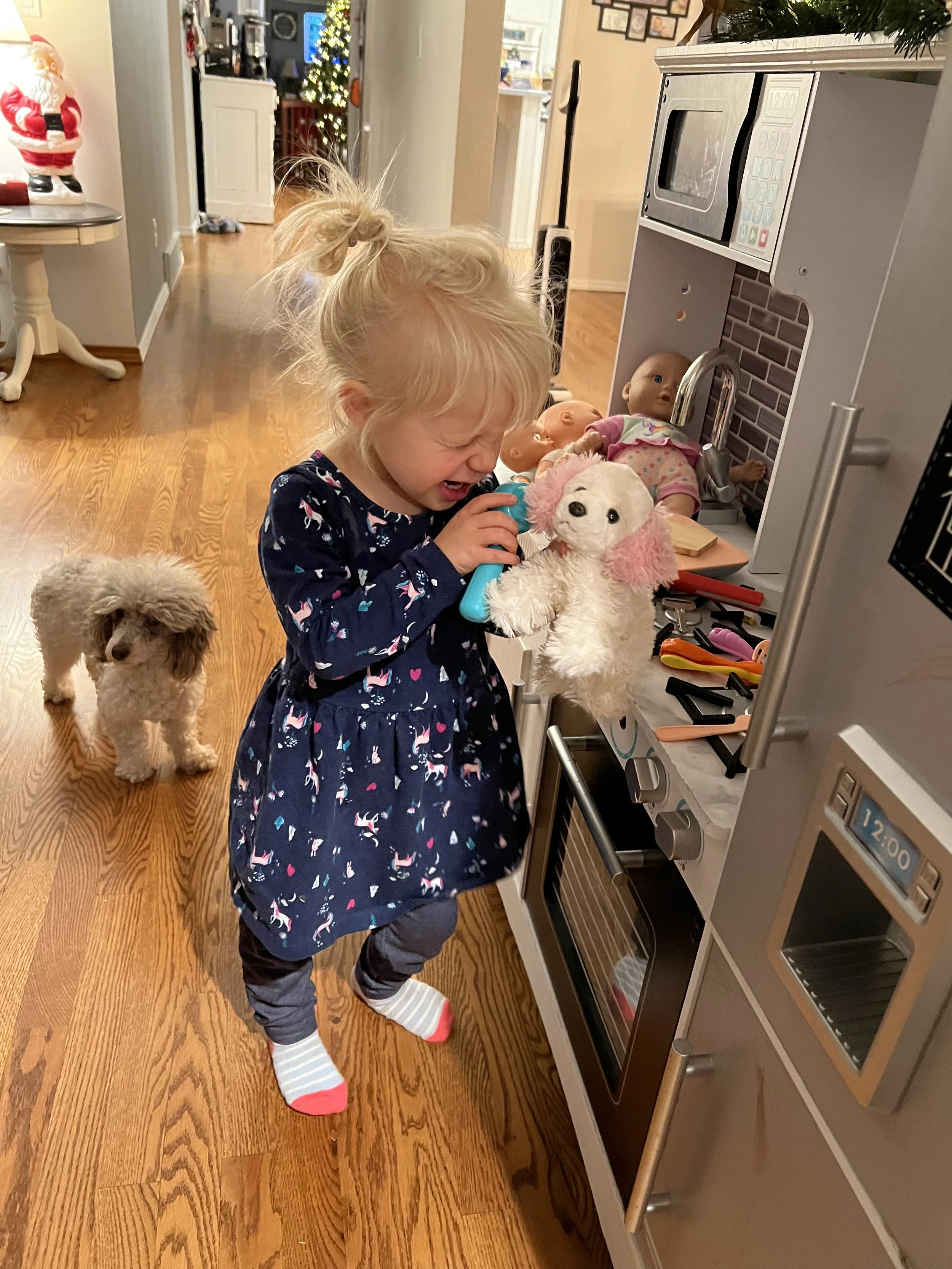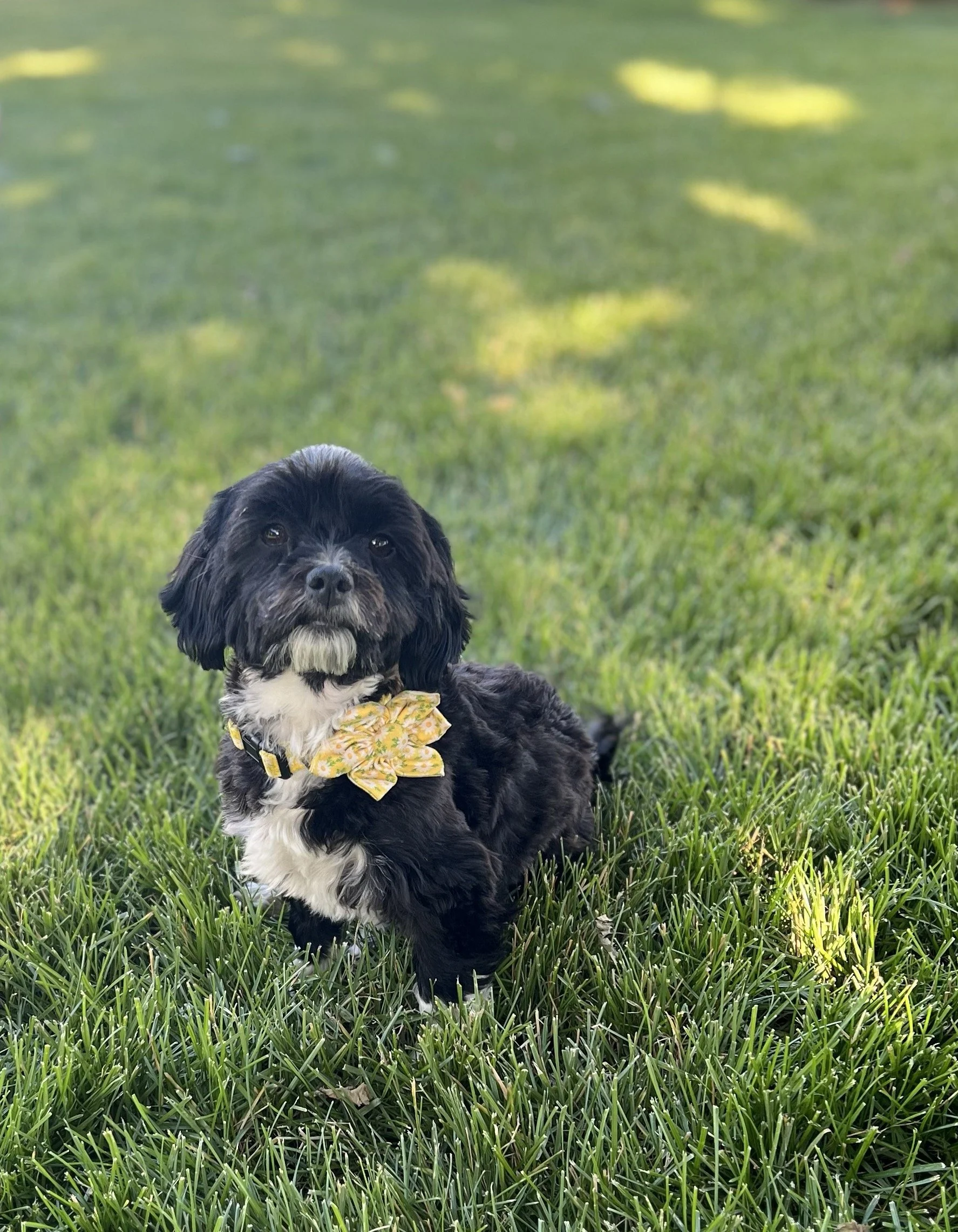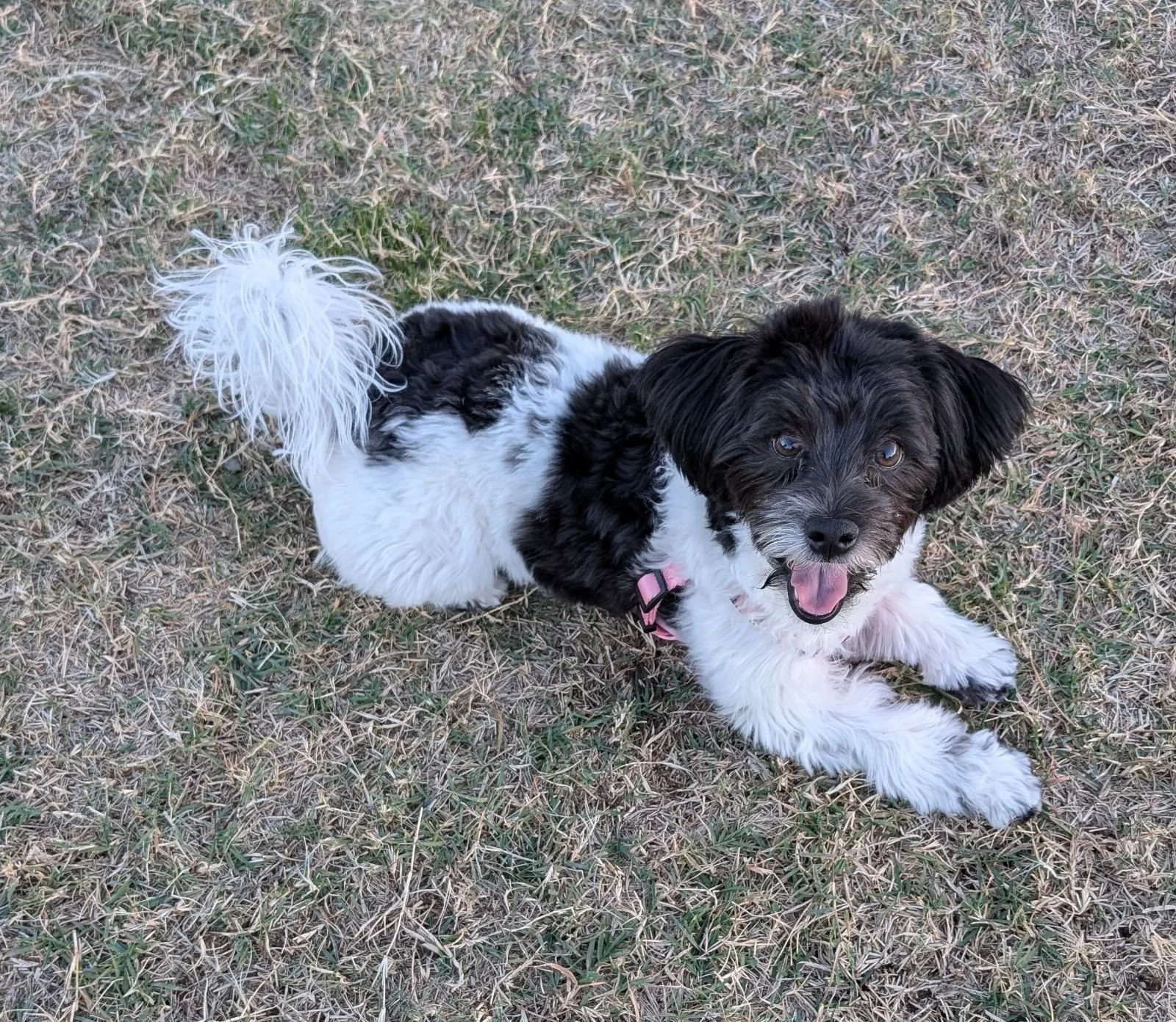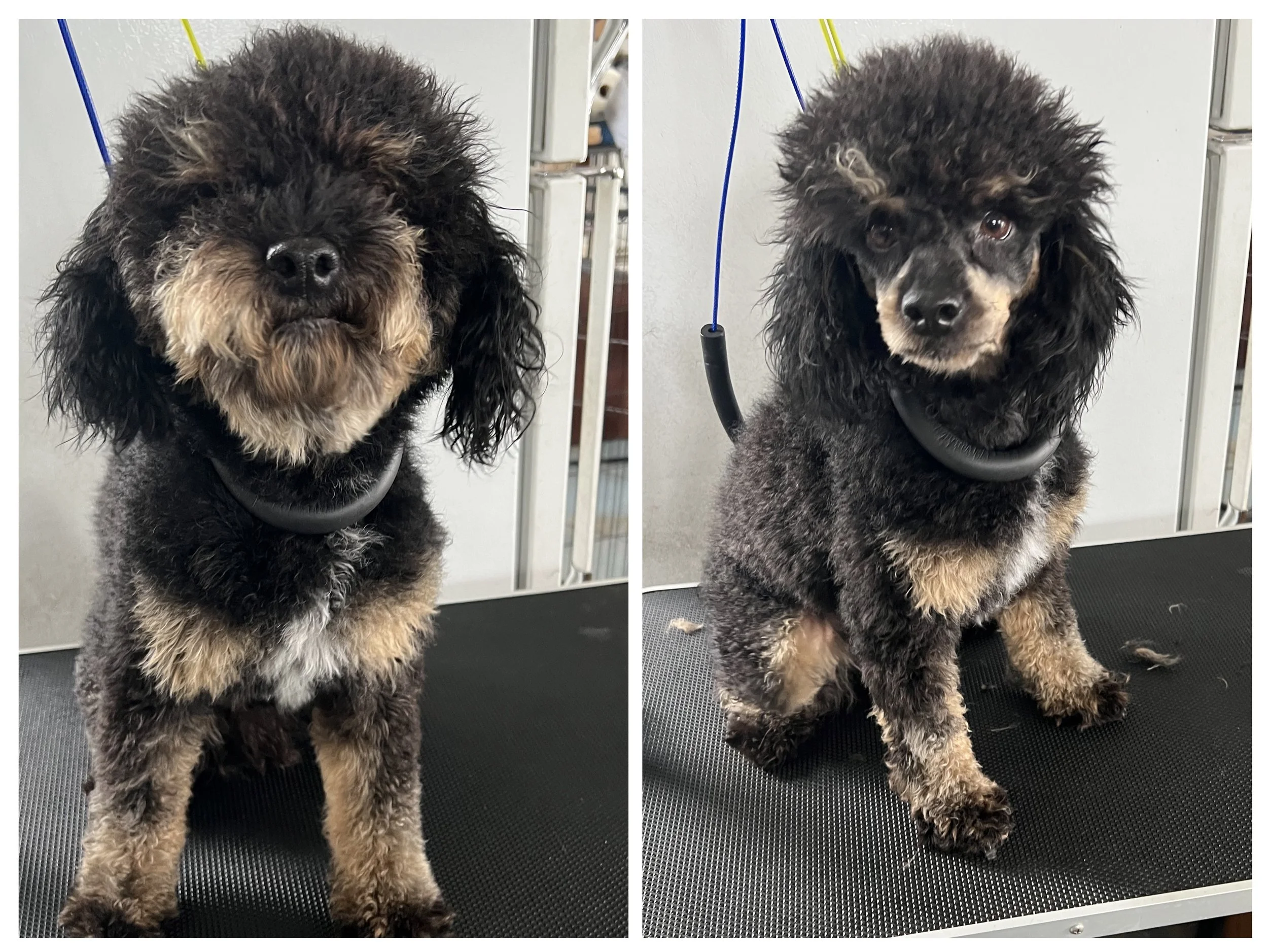What to Expect When Your Puppy Comes Home: A Few Important Health and Bonding Tips
Congratulations on your new puppy! The first few days with your furry friend are full of excitement, but they can also be a bit overwhelming. Here's a guide to help you navigate the early stages and ensure your puppy’s health, happiness, and comfort as they settle into their new home.
Health Tips: Parvo Awareness
Parvo is real and serious. Your puppy has had their first Parvo vaccine, but they’ll need 3 more to be fully protected. Parvo can live in soil for up to 7 years, so be cautious about where they go. If you’re concerned, I recommend calling your vet to check if there are any outbreaks in your area.
Limit outdoor exposure. Until your puppy is fully vaccinated (around 16 weeks), keep them off the ground outside your home and yard, I strongly recommend no shoes in your home till they are vaccinated fully, (I know this can be a huge challenge, but Parvo is easily transmitted on shoes). I love using puppy slings when I need to take them somewhere, which keeps them safe and comfy—plus, they love it! You can find these slings for under $20 on Amazon.
Final vaccine. Once they receive their last shot, I suggest waiting about a week before taking them out in public.
The First Day: Settling In
Don’t be surprised if your new puppy is very sleepy or even a little scared, especially on their first day. It’s a huge transition from the familiar scent of their mom and littermates to an entirely new environment.
Snuggle time. The first 3 days should be about bonding. Spend as much time as possible cuddling and comforting your puppy to help them feel safe. Hold them like a baby—this helps them relax and settle in.
Take it slow. After a few days, you can start leaving your puppy for short periods (like grocery runs or quick lunches). When you leave, keep it low-key, and avoid making a big fuss when you return. This helps prevent separation anxiety.
Feeding and Eating Habits
Encourage eating. Puppies can sometimes get a bit finicky during the transition. To make sure they’re eating enough, I send home high-calorie paste (in a syringe) that can help keep their blood sugar stable if they’re not eating their kibble right away. Just offer a pea-sized lick at a time.
Food options. I’ll also include some Ceasar puppy food, which can be chopped into smaller pieces and offered twice daily as a little treat to get them eating.
Avoid soft food long-term. While it’s helpful in the beginning, soft food can cause dental issues over time, and your puppy may become spoiled by the taste. Stick to kibble once they’re settled.
Creating a Safe Play Area
Playpen setup. I recommend a playpen attached to their crate where they can sleep and play safely. Include a bed, water, food, and toys. It also gives them access to a pee pad if you choose to use one, just like the picture this fluffy dog bed is great to have a nice spot to lay, I do not recommend these inside the crate as they do not wash as well as these crate beds do or something similar. The Washable water proof pee pad is wonderful if you are worried about the floor beneath your play area, I have these and they wash in the washer and come out like new!
Free feeding vs. scheduled meals. If you're free-feeding (leaving food out all day), check with your vet for recommendations. Some vets suggest feeding 3-4 times a day until they’re about 6 months old.
Quiet time. Many puppies enjoy quiet, cozy spaces, especially for naps. I cover the crate with a blanket to keep it nice and peaceful, and stick to nap schedules (e.g., around 10 am and 2 pm). When they wake up, take them outside to potty or use the pee pad.
Training and Boundaries
Biting and barking. A firm "No bite!" "No bark!" "Leave it!" can help curb undesirable behaviors. I recommend using simple commands and offering positive reinforcement when they listen.
Clapping for attention. If they’re doing something unsafe (like chewing on something they shouldn’t), a quick clap and a firm "Leave it!" usually gets their attention. This is a helpful way to stop bad behaviors before they escalate.
Bonding and Socializing
One-on-one bonding. If you’re hoping for your puppy to bond closely with one person (such as for a therapy or service dog, or for a child with anxiety), it’s a good idea to designate that person to spend the most time with the puppy during the first few days to a week. This focused time helps the puppy build trust and create a strong bond with their primary caregiver. Once your puppy starts to feel comfortable, other family members can start joining in on the fun!
If you’re aiming for your puppy to bond with the whole family, then just skip this step and let everyone shower your new puppy with love! The more positive experiences and affection, the better for their adjustment
Sleep time. The first night with your new puppy, they will likely be very sleepy and might sleep through most of the night. In my experience, however, the second and third nights can be the toughest, but things usually get much better after that.
It’s important to decide where your puppy will sleep and stick with it. Sometimes, plans don’t go as expected, and that’s totally okay! If you find that what you thought would work isn’t quite right, it’s perfectly fine to readjust your plan. Just remember, this phase is short. After a few nights in the crate, your puppy will adjust.
If you're hoping for a bit more sleep during the night, you can leave the crate open with just a pee pad inside (no toys or extra bedding in the playpen). You want to create a calm, quiet environment for your puppy. Personally, I fold my playpen down to just three corners, leaving only room for a pee pad. This limits the space your puppy has to play, which helps keep things quieter overnight.
Every puppy is different, and until your puppy is home and settled, it’s hard to know exactly what they’ll be like those first few nights. Trust the process, and know that things will get better with time!
Socializing. From 17 weeks to 21 weeks (or longer is great!!) aim to take your puppy to pet-friendly stores, puppy classes, and new environments to help them become well-rounded adults. Socializing during this critical period is key for their development. Google what stores allow you to bring your puppy, you will be surprised the fun stores that will gladly let your baby shop with you! and this is excellent exposure for your pup after vaccines.
Puppy classes and parks. I recommend checking out local puppy classes or socializing events, I know store like petsmart offer them. Some dog parks even have “Havapoo hours” where puppies of similar breeds can play together, I am very cautious with dogs parks, many times your neighborhood dog park will have a group page on Facebook so you can get a feel for different hours and dogs, but dog parks can be amazing! Just use caution as they are all different, I do know of many families that go often and love it, I know of others that have had bad experiences.
Online Training and Resources
I love Baxter & Bella’s online training program! It’s a one-time membership that gives you access to their entire library of training videos, personal phone calls with trainers, and much much more. It’s an amazing resource for any puppy parent, that will carry into their adult hood as well.
Bonus: If you choose to try Baxter & Bella, use my code Havaluvpuppies to save 25%!
Puppy classes and parks. I recommend checking out local puppy classes or socializing events, even just a weekly trip to your local pets store, just to get out and see other dogs, I know stores like petsmart offer classes, I would recommend those on top of the Baxter and Bella, as that will give you the home training and experience you need but these outings will greatly help with puppy socializing in turn that will insure your pup grows up to be a well rounded dog that loves to go places and meet people. We have many of our families that travel the country with their dog, they go camping, sailing on the ocean and so many more crazy adventures, the key to that is getting them going at young age, setting them up with confidence.
Many doggy day cares out there that can be beneficial as well.
Some dog parks even have “Havapoo hours” where puppies of similar breeds can play together, I am very cautious with dogs parks in general, especially as these are smaller dogs. Many times your neighborhood dog park will have a group page on Facebook so you can get a feel for different hours and dogs, but dog parks can be amazing! Just use caution as they are all different, I do know of many families that go often and love it, I know of others that have had bad experiences. Be sure your baby is vaccinated before ever going to a dog park.
What to Expect When You Pick Up Your Puppy: Travel Tips
Flying with Your Puppy: When flying, we give the puppies nap time in a soft, airline-approved carry-on case. This really helps your puppy feel secure during the journey. There are many different cases available, but I’ve used this one several times and it’s still in perfect condition after 4 years! That said, they’re all quite similar, so choose the one that catches your eye.
At the airport, your puppy will not be let out to roam on the ground due to the risk of germs, but you can hold them while you wait. Airports are high-traffic areas, so it's best to keep them safe. You’ll find a collapsed bowl in your go-bag, which is perfect for a few sips of water.
Once on the plane, your puppy will likely curl up in their case and go to sleep. If they happen to have an accident (which is rare), there’s a gallon-sized ziplock in your go-bag with paper towels and an extra pee pad. Simply roll up the mess, zip it up, and you’re good to go. To help prevent any accidents, I recommend using the high-calorie paste from your go-bag and avoiding food until you’re safely home. The paste will keep them healthy for a few hours, so you can worry less about potential messes.
Driving with Your Puppy: Driving is very similar to flying in many ways. Stick to the same rules—limit food, use the collapsible bowl for a few sips of water, and avoid letting your puppy out during stops (especially at rest areas, which are high-risk for Parvo). If you need to stop, unfold a pee pad in your car trunk or somewhere similar. Your puppy will instantly know what to do and you can get back on the road quickly!
Grooming and Care.
I always recommend grooming your puppy regularly at home, starting early. Once they're fully vaccinated, they’ll be ready for their first haircut. I tell the groomer to give them a “Teddy bear cut”—it looks absolutely adorable on these little Havapoos! Don’t wait until they’re 6-8 months old—getting their first grooming between 17-20 weeks will set them up for success.
At home, you can get them used to being bathed (no more than once every 3 weeks). There are plenty of great dry shampoos for between baths. I also love using this detangle spray, which helps keep their coat nice and smooth. They’ll need to be brushed daily or every few days while they’re young. This helps them get used to the process, making them more comfortable with brushing as adults.
Make sure to check their ears weekly, trim their nails once a week (using the baby nail clippers included in your go-bag), and eventually, you’ll only need to trim them every 3-4 weeks, these are my favorite adult nail clippers For eye boogies, use the little comb in the go-bag to keep their eyes clean and clear of eye boogies.
Grooming Your Puppy at Home: My Favorite Tools
If you decide to groom your puppy at home (or just do touch-ups between professional grooms), here are my favorite grooming items. I’ve found them to be very reasonably priced on Amazon, and I’ve had great luck with them over the years!
First things first, don’t skimp on grooming clippers—they’re the gold standard for a good grooming session! A high-power blower is also very important to help speed up drying time and ensure a smooth finish.
A good grooming table is a must—trust me, I started grooming on the floor for the first 6 months, and it wasn’t fun. I highly recommend the $60 grooming table. It folds up easily and makes the whole process much more comfortable.
Grooming shears are super handy, too. I’ve used both inexpensive ones and more expensive ones (which I thought were pricey, but they’ve lasted a long time and work great!). If you’re only grooming one or two dogs, the cheaper ones are fine. But since I groom for family and friends too, I definitely needed a more durable pair.
While I don’t use top-of-the-line tools, I’ve been really impressed with how well everything has held up—especially considering I do multiple grooms a month!
Don’t Forget the Basics:
Pin Brush: Great for fluffing their coat.
Greyhound Comb: Helps find and untangle those knots.
Andis Slicker Brush: This is my go-to for just about everything.
Gloves: Believe it or not, your dog will be much cleaner if you wear gloves while bathing them! I learned this the hard way after 10 years. I got these gloves, and the difference was incredible! Plus, I used half the shampoo and conditioner. I felt like I’d missed out on a whole new world before this!
I’m Always Here for You! The first few weeks can be challenging, but remember, I’m just a phone call away if you ever have any questions or need support. Raising a puppy is a journey, and I’m excited to be a part of yours! 😊
A Note on Affiliate Links:
As an Amazon Associate, I earn from qualifying purchases. This means I may receive a small percentage of the sale when you buy through the links I share. That said, these are 100% the items I use daily for my own dogs, and I genuinely recommend them based on personal experience. However, if you choose a similar product, that's completely fine! My goal is always to share items that will make your life easier and your puppy’s life better.
Being an Amazon Associate just makes it more convenient to share these links with you. I’ve had a wish list for years, but every time someone purchased something off it, I’d have to go back and add it again! Now, with these links, I can easily share my favorites with you while earning a little on the side to keep doing what I love. I truly appreciate your support!
My handsome Ripple out on the town with me as a baby, hard to believe how fast they grow up!
Hold them like a baby… this is my favorite way to hold them as puppies and adults.
I always start them in the soft crate young and always with a cozy blanket!
Keep an eye on those ears - Maddie

